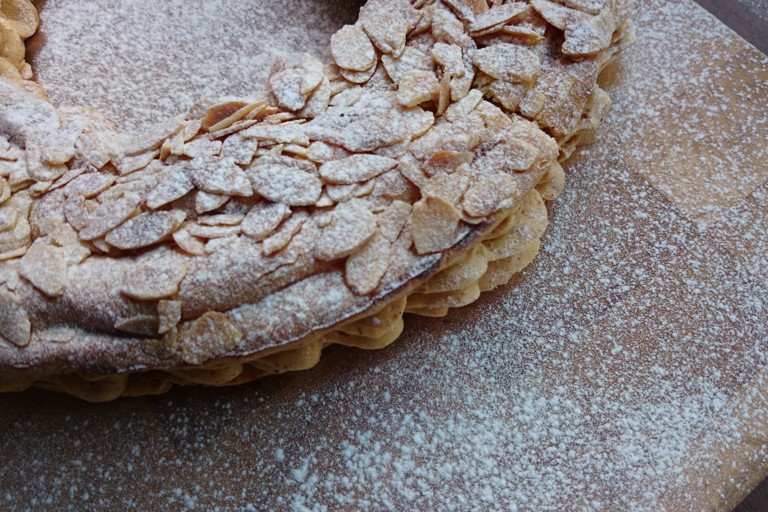Paris–Brest
A bite of this rich, almond-laced wheel became popular with riders on the original Paris–Brest route, in part because of its energizing, high calorific value.
Learning from the gruelling 1200km route, Henri Desgranges (racer and journalist) organised the first Tour de France using stages, which allowed the riders to rest, in 1903. The legendary Paris-Brest can nowadays be found in patisseries all over France, and is a particularly potent symbol of two great French passions - patisserie and cycling.
Tip: You can buy the almond praline paste online, but I used almond butter. Alternatively, you can use Nutella or any other nut butter.
For this recipe, you will need:
2 x Piping bags
1 x 2cm round nozzle
1 x 1½cm fluted nozzle
Spatula
Sugar thermometer
Food mixer with whisk attachment
Pastry Brush
Wooden spoon
Ingredients
Metric
Imperial
Choux pastry
- 250ml of water
- 200g of plain flour
- 100g of unsalted butter
- 1 pinch of salt
- 4 eggs
Almond butter cream (praline crème au beurre)
- 8 egg yolks, at room temperature
- 250g of sugar
- 250g of unsalted butter, cubed and softened
- praline paste, almond and hazelnut, to taste (or nut butter)
Garnish
- 100g of flaked almonds
- 50g of icing sugar
- 1 egg yolk, lightly beaten
Method
Get in touch
Please sign in or register to send a comment to Great British Chefs.


